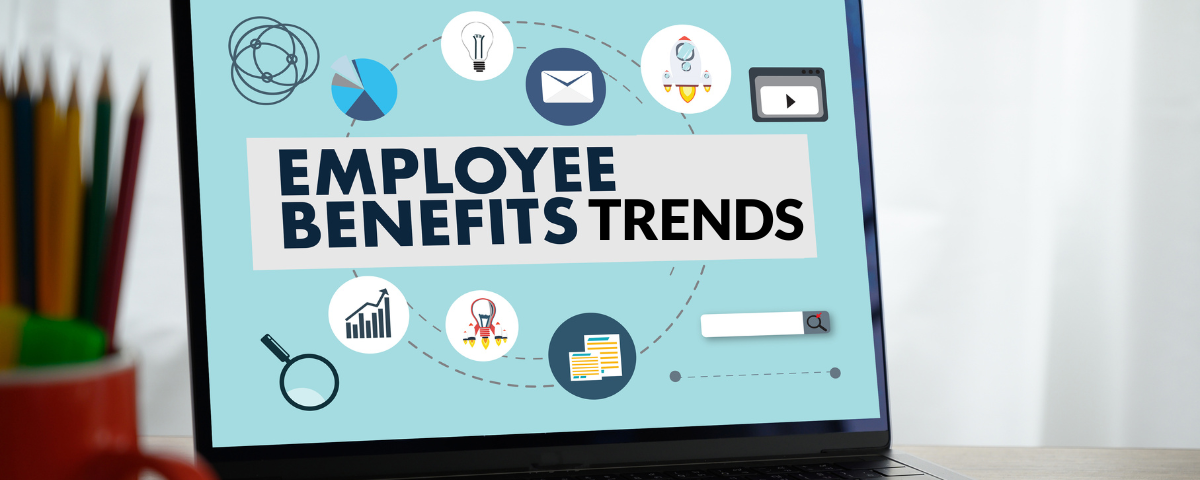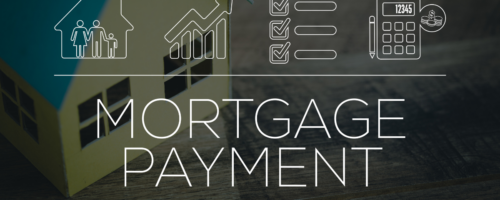Hey, big news in the world of work is coming your way. The scene for employee benefits predictions is getting a major shake-up in 2024. Get ready to dive into what’s ahead.
We’re talking personalization like never before—benefits that fit like your favorite pair of jeans. Mental health isn’t just a buzzword; it’s front and center with real programs making a real difference.
And if you think tech was only about gadgets, think again. It’s transforming benefit plans into something out of sci-fi—in the best possible way!
Buckle up! You’re about to get the lowdown on how employee benefits predictions and trends could change your day-to-day at work.
The Future of Employee Benefits: Predictions and Trends to Watch
As the labor market continues its dynamic dance, companies are staying on their toes. They’re finding ways to keep up with expectations that now stretch beyond a paycheck. The future of employee benefits is shaping up to be quite the spectacle, focusing heavily on personalization and mental health.
Personalization and Flexibility in Benefit Plans
Gone are the days when one-size-fits-all was the mantra for benefit plans. In 2024, we’re seeing trends where tailoring benefits to meet individual employee needs isn’t just nice—it’s necessary. Employees want choice; they crave control over their healthcare costs and work-life balance options.
This shift means plan sponsors need more than traditional health plans—they require creative wellness programs that speak directly to each person’s unique situation. From flexible work arrangements like hybrid or remote work opportunities, which blend productivity with comfort at home, to personalized wellness initiatives that help employees focus on both physical fitness and financial stability—employers expect these offerings will make a positive impact not only on retention but also attraction as talent acquisition becomes increasingly competitive.
Mental Health and Well-being Initiatives Gain Prominence
In-office days can sometimes feel long gone—and although this might have some perks, it has cast light onto an important aspect: mental well-being. Mental health support in workplaces isn’t just about counseling services anymore; it’s about creating an environment where awareness campaigns become everyday conversations among peers.
To enhance mental robustness within teams while keeping stress management front-of-mind for leaders share responsibilities alike—a comprehensive approach is key—think regular check-ins paired with access to professional help when needed through company-backed DEI efforts (diversity, equity & inclusion). This commitment showcases how seriously industry leaders take care of their most valuable asset—their people—and aligns perfectly with best practices advocated by consulting firms specializing in workplace predictions such as Global Healthcare Resources – Wellness Consulting.
Enhancing Financial Wellness Programs for Employees
The chatter around water coolers has shifted from weekend plans towards retirement savings discussions—an indicator of growing concern regarding financial wellness among staff members throughout 2024 already hinted at this trend gaining momentum into 2024.
Larger employers are weaving more robust management programs into the fabric of company culture, aiming specifically to reduce the financial stress felt by their workforce. This leads to greater employee satisfaction overall—not to mention giving them an edge over the competition, which is always a welcome bonus. By offering tools and resources that point employees in the direction of better money habits, they’re giving them a solid foundation upon which to build future dreams and turn those dreams into reality.
Benefits in 2024 are all about personal touches and mental health. Employers are crafting benefit plans that cater to individual needs, offering more control over healthcare costs and work-life balance. With a rise in remote work, there’s also a stronger focus on mental well-being initiatives—like regular check-ins and DEI programs—that show companies take their employees’ happiness seriously.
The talk around the office is changing too; it’s less about weekend fun and more on securing financial futures. Firms are stepping up with beefed-up money management help, aiming to ease workers’ money worries—and that’s winning them points in the job market.
Enhancing Financial Wellness Programs for Employees
Financial wellness programs are fast becoming the heartbeat of benefits packages, as more and more employees share that money worries impact their job performance. It’s no secret; when your bank account is healthier, so is your work life.
Industry Leaders Share Insights on Financial Wellness
Talking with industry leaders about financial stability for employees opens a window into future trends. These conversations reveal an increasing shift towards integrated support systems within companies. Large employers have started to see how addressing financial stress can boost employee satisfaction—and it’s changing the game.
The days when health plans were only about physical health are behind us. Now, they’re expanding to include tools aimed at enhancing mental well-being and easing financial burdens. Consulting firms specializing in workplace predictions point out that personalized wellness programs which consider an individual’s unique needs could make all the difference.
A recent report from BenefitsPro underscores this movement by showing just how vocal workers have been regarding finances disrupting their focus at work throughout 2024 (BenefitsPro’s Employee Benefits & Workplace Predictions). Listening to these concerns has led savvy businesses down new paths—like incorporating counseling services, awareness campaigns for better spending habits, or even apps designed specifically to help manage debt effectively.
Key Stats: Addressing Money Matters Means More Engaged Employees
The link between fiscal fitness and job performance isn’t merely anecdotal—it’s backed by data gathered over the past year indicating significant shifts in engagement solutions offered by employers. As labor market dynamics evolve, HR leaders recognize not just any plan will do; instead focusing on crafting benefits predictions that cater uniquely to their workforce needs seems key.
Global Healthcare Resources’ consulting expertise suggests tailoring benefit plans leads to greater employee retention,. This approach hinges on technology partners adept in health care data analytics playing a pivotal role in shaping tomorrow’s benefit landscapes through enhanced personalization methods.
Fostering Work-Life Harmony with Smart Plan Design
Beyond immediate healthcare costs lies another crucial aspect of modern benefits program design—work-life balance initiatives including flexible work options like remote or hybrid models and possibly four-day workweeks. Senior directors across industries note such flexibility can enhance mental sharpness during working hours while giving staff time back for themselves—a positive impact we could all use.
In fact, DEI (Diversity Equity Inclusion) efforts also intersect here profoundly since fostering inclusive environments not only encourages a broader range of perspectives but also helps create a space where everyone feels valued and empowered. This ultimately leads to more innovative solutions and drives business success.
Money stress hits job performance hard, but smart companies are tuning in. They’re crafting financial wellness programs that go beyond the basics—think debt management apps and spending advice—to keep employees focused and satisfied.
As work-life balance takes center stage, expect to see more perks like flexible schedules or even four-day weeks. Plus, weaving DEI into company culture is not just good vibes—it’s smart business that sparks innovation.
Leveraging Technology-Driven Solutions in Employee Benefits
As the world spins into 2024, we’re seeing tech weave its magic into nearly every facet of our lives, and employee benefits are no exception. Gone are the days when a one-size-fits-all health plan was enough to keep everyone on board. Today’s workers want benefits that flex with their unique lifestyles.
Empathetic AI Empowers Benefits Tech and HR
The latest buzz around the water cooler is all about empathetic AI. This isn’t your run-of-the-mill robot; it’s smart technology that gets you—like really gets you. It’s enhancing benefit management systems by delivering personalized wellness programs right where they matter most: at your fingertips.
This type of technology-driven solution in employee benefits is not just cool; it’s changing how companies support their workforce. Think Siri or Alexa, but instead of playing your favorite jam, they’re navigating you through an ocean of health care data analytics so deep even seasoned sailors would balk.
We’ve got industry leaders sharing insights left and right about this trend because let’s face it—they know staying ahead means keeping employees engaged and satisfied without them having to decipher hieroglyphics whenever they need some mental well-being help or stress management tips.
If there were any doubts before, technological advancements have proven to be game-changers for personalizing healthcare costs within company health plans—a boon considering these costs can often hit harder than Monday mornings after daylight savings time kicks in.
A quick look at engagement solutions reveals a focus on more than just numbers—it’s about understanding people as individuals with distinct needs rather than cogs in a corporate machine who get fed standard-issue advice regardless of what keeps them up at night (and I’m not talking late-night binge-watching).
Data management plays MVP here too because without those number-crunching skills backing things up, offering flexible work arrangements like four-day workweeks might as well be wishful thinking scribbled on post-it notes scattered across someone’s desk (we’ve all been there).
The bottom line? Employers expect technology partners who can provide both compliance solutions along with shiny new toys—that sweet spot where high-tech meets high-touch service—to affect employee satisfaction positively while reducing financial stress from worrying over unexpected medical bills or retirement savings shortfalls.
As we rocket into 2024, tech in employee benefits is all about personalization. Think AI that knows you better than your favorite playlist does, making health plans as unique as the people they serve. It’s more than just fancy features; it’s about real help—like navigating healthcare costs without breaking a sweat.
Prioritizing Work-Life Balance Through Innovative Benefits
As we navigate the ever-evolving workplace, employers are catching on: work-life balance isn’t just a buzzword—it’s a make-or-break factor for today’s talent. It turns out that employees really do fancy having time to live their lives outside of office hours—who knew? And now, companies are stepping up with some innovative work-life balance strategies to keep their teams happy and humming.
So, what’s cooking in the benefits pot for those who want more life in their work-life equation? For starters, flexible work arrangements have gone from nice-to-have perks to must-haves. We’re talking about options like hybrid work models where you can split your hustle between home and an office without missing a beat. The popularity of this approach is clear as day—everyone loves wearing pajama bottoms during video calls (just kidding…or am I?). But seriously, it gives people control over how they manage their working hours and location.
Now let’s chat about something pretty cool: four-day workweeks. Some forward-thinking outfits have decided that maybe we don’t need five days every week to get our jobs done after all. This not only scores big points for employee satisfaction but also shows potential hires that these companies mean business when it comes to valuing personal time.
Personalization and Flexibility in Benefit Plans
We’ve seen traditional health plans; now prepare yourself for personalized wellness programs custom-tailored like your favorite suit or dress. These aren’t one-size-fits-all solutions—they’re made just for you based on your needs and preferences. Industry leaders share insights indicating this level of customization has been gaining traction because when folks feel cared for individually, they stick around longer—and hey, productivity tends to go through the roof too.
Talking shop about best practices here—but if there’s anything large employers agree on lately it’s giving greater employee autonomy within benefit offerings is key right now. Plan sponsors know by providing choices whether it be counseling services or stress management programs alongside primary care—that flexibility leads directly towards better mental well-being across teams.
Mental Health and Well-being Initiatives Gain Prominence
Gone are the days when talking about mental health at work was taboo; welcome to an era where companies invest heavily in awareness campaigns focusing squarely on mental health support. Leaders share stories confirming investing in comprehensive initiatives isn’t just good karma—it actually gives businesses a competitive edge by enhancing overall morale which directly affects employee retention rates positively.
In conclusion, remember that healthcare expenses can cause a lot of financial worry for employees. That’s why adding financial wellness to benefit packages is super important these days. With the job market being as complex as it is—think gig economy and contract work—it’s more crucial than ever.
Work-life balance is a game-changer for talent retention, and companies are getting creative with benefits like flexible work schedules and personalized wellness programs to keep their employees content and committed.
Mental health support in the workplace has shed its stigma, becoming a vital part of company culture that boosts morale and keeps teams productive. Plus, adding financial wellness options helps ease employee stress in today’s intricate job market.
The Future of Employee Benefits: Predictions and Trends to Watch
As the clock ticks toward 2024, employee benefits are getting a serious makeover. Companies know that one-size-fits-all doesn’t cut it anymore. They’re shaking things up with tailor-made benefit plans that hug each employee’s needs like their favorite pair of jeans.
Personalization and Flexibility in Benefit Plans
Say goodbye to rigid health plans. Personalized wellness programs are becoming the new normal because they offer something special for everyone. Imagine health support that understands whether you’re a yoga enthusiast or a meditation newbie. And flexibility? It’s not just about choosing your work hours; it’s also picking what perks make sense for you—be it counseling services or gym memberships.
In this fast-changing labor market, industry leaders share insights on making sure these personalized options aren’t just fluff but have real substance. By consulting firms specializing in wellness and leveraging wellness consulting, companies can create packages as unique as the individuals who use them.
Mental Health and Well-being Initiatives Gain Prominence
The days when mental well-being was an afterthought are over. Mental health support is now front-and-center, recognizing its impact on everything from productivity to engagement solutions—and let’s not forget retention rates. Organizations understand that greater employee satisfaction comes from knowing someone has got their back if stress management becomes more than just managing deadlines.
To get there, plan sponsors are doubling down on DEI initiatives while keeping an eye out for best practices across different industries to enhance mental well-being further through awareness campaigns designed by technology partners adept at data management.
We’re talking about full-on integration into healthcare costs because financial stress can be as distracting as a loud coworker during crunch time.
Enhancing Financial Wellness Programs for Employees
Talking dollars makes sense – literally. As employees increasingly express concerns over financial stability impacting work performance, savvy employers expect benefits predictions hinting towards robust financial wellness programs will pay off big time (pun intended).
Industry Leaders Share Insights on Financial Wellness
Buckle up because large employers predict finding ways to incorporate comprehensive financial help within existing benefit structures will be key moving forward. We’ve already seen senior directors acknowledge how money woes affect employee experience; thus future work strategies must point employees towards brighter fiscal futures.
By visiting sources like BenefitsPro, HR leaders can stay ahead of the curve, arming themselves with the latest insights and tools. This approach ensures they’re well-equipped to design benefits packages that truly support their workforce’s financial wellbeing.
Get ready for benefits that fit like a glove. Companies are crafting personalized plans and mental health is taking the spotlight. Expect more flexible wellness options and financial programs to boost employee satisfaction in 2024.
FAQs in Relation to Employee Benefits Predictions
How do you forecast employee benefits?
To predict benefits, firms study market trends, survey worker preferences, and analyze cost impact.
What is the average percentage of employee benefits?
The average benefit load can be around 30% to 40% atop an employee’s salary.
Do employee benefits really matter?
Absolutely. Benefits draw talent and keep them committed for the long haul.
How much should I budget for employee benefits?
Budget about 1.25 to 1.4 times the base pay per staffer for total comp costs.
Conclusion
So, you’ve journeyed through the future of work. The 2024 employee benefits predictions point to a world where your job fits around your life, not the other way around.
You’ve seen how mental health takes center stage; it’s vital and valued. Personalized plans are on the rise—because one size never really fit all.
Tech isn’t just behind the scenes anymore. It’s front line, upgrading our experience with smarter systems that know what we need before we do.
Catch this wave early! These trends aren’t just passing fancies—they’re blueprints for tomorrow’s workplace. Let them guide your next move in this ever-changing labor market.










